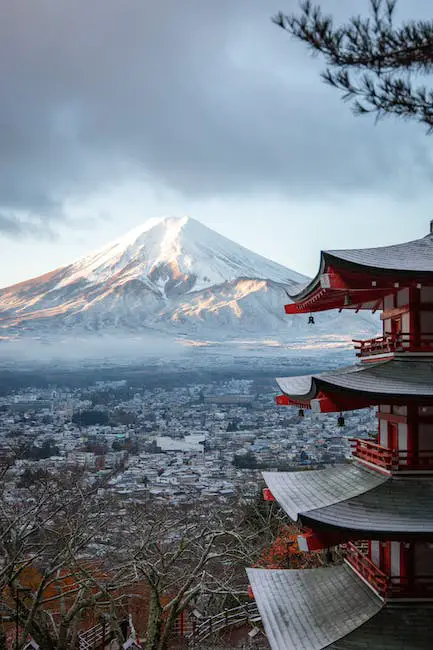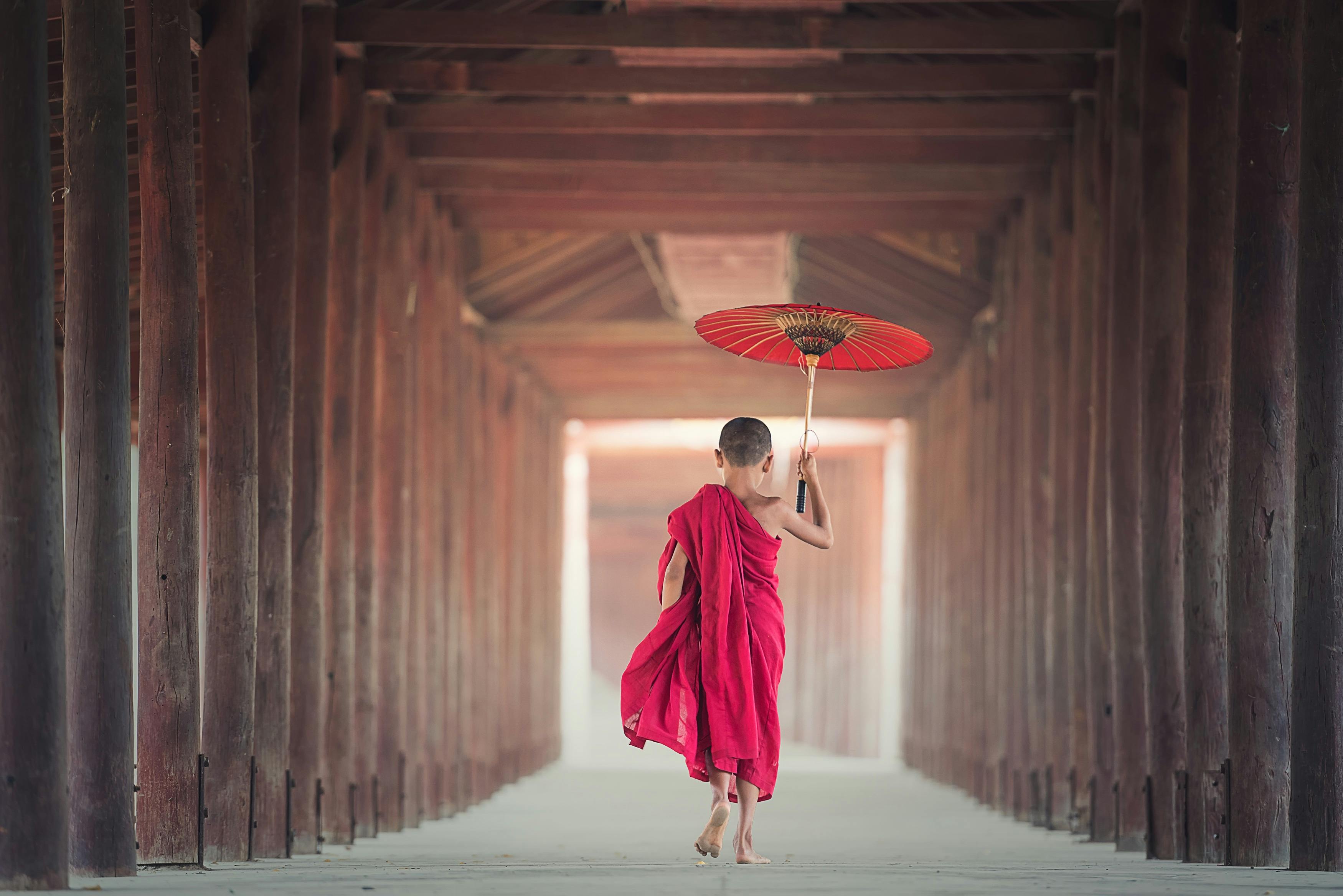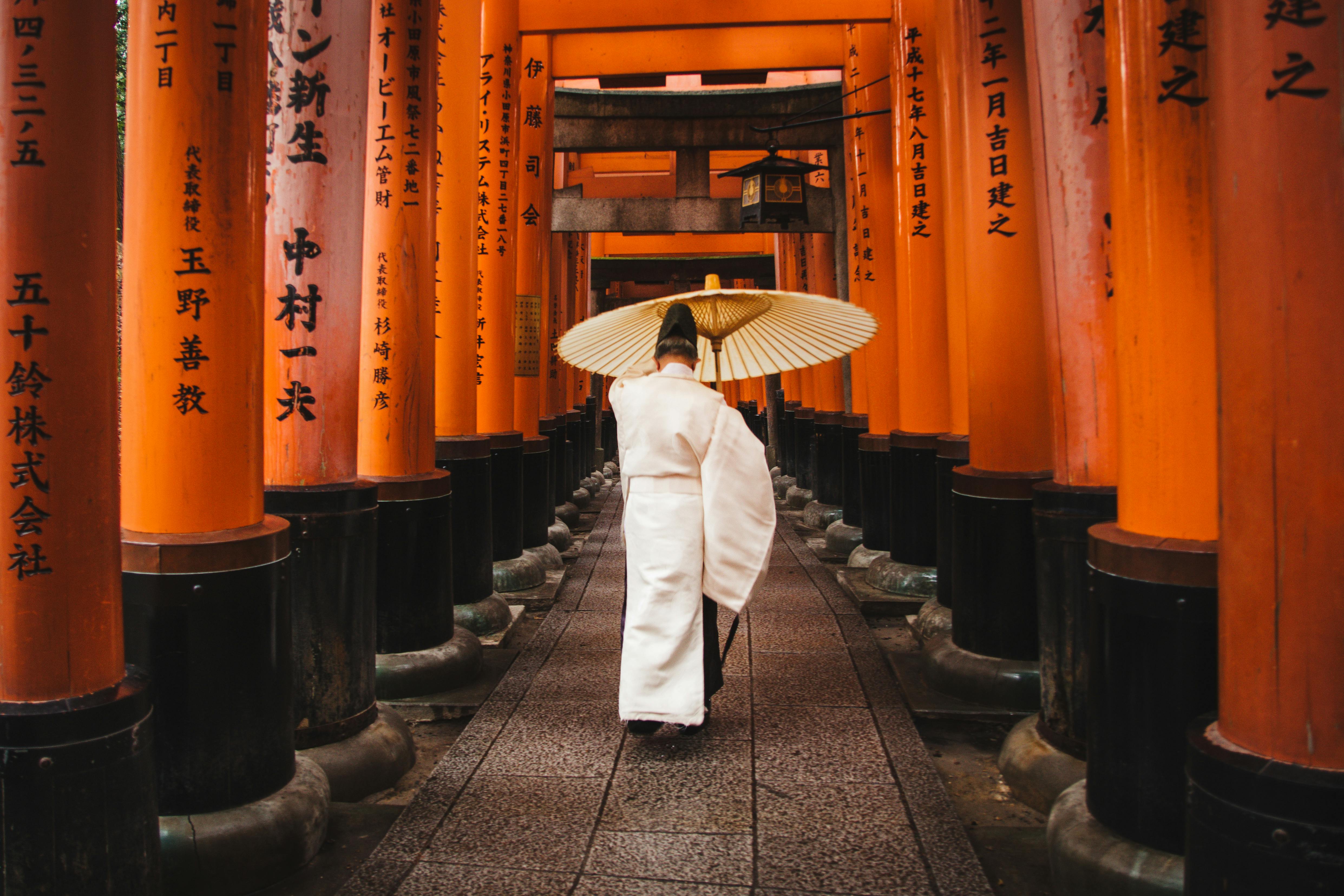What To Wear In Japan

Travelling to Japan is an exciting experience, and one of the fun parts of planning a trip to Japan is deciding what to wear. Whether you are visiting during the winter months or in the warmer summer months, choosing the right clothing for your trip is essential for both comfort and cultural awareness. In this article, we will discuss what to wear in Japan, taking into account Japan’s climate, customs, and fashion trends.In Japan, during summertime, it is best to wear light and breathable fabrics such as cotton or linen. Additionally, wearing loose fitting clothing can help keep you cool and comfortable in the hot weather. To protect your skin from the sun, make sure to bring a hat and sunglasses with you. You may also want to bring a lightweight jacket or scarf for cooler evenings. Lastly, don’t forget to wear comfortable shoes that are well-suited for walking around all day!
Traditional Clothing for Japanese Women
Japanese women’s traditional clothing is steeped in history and has evolved over the centuries. Kimono, hakama, and jimbei are the most iconic and recognizable items of clothing that are still worn by many Japanese women today. The kimono is a traditional robe-like garment that is usually made of silk or cotton and can be plain or colorful with intricate designs. The hakama is a divided skirt that is worn over the kimono, making it look like a long dress. The jimbei is a type of shirt that was traditionally worn by samurai warriors and farmers. It has become popular in modern times as an outer garment for casual occasions.
The most formal type of traditional clothing for Japanese women is the furisode, which consists of a long-sleeved kimono with brightly colored patterns. These are usually worn by young unmarried women on special occasions such as weddings or festivals. Women who are married typically wear the uchikake, which is an elaborately decorated long kimono often worn with an obi (a wide sash). The houmongi is another formal type of kimono that can be worn for special occasions such as tea ceremonies or weddings.
Modern Japanese fashion has also been heavily influenced by traditional clothing styles. Many young women wear Western-style clothes but often add elements of traditional dress such as obis or tabis (split-toed socks). Some people also wear yukatas, which are lighter versions of the kimono traditionally made from cotton and usually worn in the summertime for festivals or other casual events.
No matter what style they choose to wear, Japanese women have always been fashion forward and have kept traditional clothing alive through modern interpretations. It’s not uncommon to see young women wearing kimonos at festivals or even to school, while older generations still favor more formal types of traditional dress for special occasions like weddings or tea ceremonies. Traditional clothing continues to play an important role in Japan’s culture and will likely remain popular among Japanese women for generations to come.
Traditional Clothing for Japanese Men
Japanese men traditionally wear kimonos in special occasions such as weddings, festivals, and other important events. The traditional kimono is a T-shaped garment that is wrapped around the body and is tied with a sash called an obi. Kimonos are usually made from silk or cotton and come in a variety of colors, patterns, and styles.
In addition to the traditional kimono, there are other types of traditional clothing that are often worn by Japanese men. The hakama is a type of pleated trousers that are worn over the kimono and can be either long or short. Hakama can be made from various fabrics such as cotton, silk, or linen. The haori is a type of coat that is worn over the kimono and can be made from various fabrics such as wool or cotton.
The happi coat is another type of traditional clothing that Japanese men wear in special occasions. It is a short coat made of cotton or linen with wide sleeves and an open front. It usually features various symbols or designs related to the event it’s being worn for, such as family crests or logo designs.
In more casual settings, Japanese men also wear yukata robes which are lightweight garments made of cotton or linen. Yukata robes generally come in solid colors with simple designs such as stripes or geometric patterns. These robes are usually worn at summer festivals, but can also be worn during the day at home or on outings with friends.
Japanese men also wear tabi socks which are split-toe socks made from cotton or leather materials. Tabi socks are traditionally paired with sandals called zori which have flat soles and thong straps on top for securing them to the feet. Tabi socks can also be paired with other types of footwear such as sneakers for more casual looks.
While some of these traditional clothing items may not be seen much nowadays due to changing fashion trends, they remain popular amongst those who celebrate their culture through wearing traditional garments during special occasions and events. Traditional clothing offers an interesting insight into Japan’s cultural history and provides an opportunity to learn about how people dressed in bygone eras while still looking stylish today!
Appropriate Attire for Visiting Temples in Japan
Visiting temples is an important part of any trip to Japan, and it’s important to be aware of the dress code for these sacred places. In general, visitors should refrain from wearing clothing that is too revealing or inappropriate when visiting temples. This includes short skirts or shorts, tank tops, and clothing with offensive messages or images. It’s best to wear clothing that covers your shoulders and knees, such as a long skirt or pants.
When visiting a temple, you should also take off your shoes before entering the temple grounds. Shoes are typically removed before entering a building in Japan, in order to keep the floors clean and respectful of the space. Before entering some temples, there may be a small area where you can store your shoes while you explore the grounds.
In addition to appropriate attire and footwear, it’s possible that certain items may be prohibited in certain temples due to religious reasons. For example, smoking is prohibited in many temples and shrines in Japan. It’s best to check with the temple beforehand if you plan on bringing any items with you during your visit.
Overall, when visiting temples in Japan it’s important to remember to dress appropriately and respect the temple grounds by refraining from smoking or bringing any prohibited items into the area. Doing so will ensure that all visitors have a pleasant experience while exploring the beautiful temples of Japan.
What Not to Wear in Japan
When traveling to Japan, it is important to be mindful of the cultural customs and expectations. This includes the type of clothing that is considered appropriate in Japanese society. Wearing clothing that is too revealing or provocative can be seen as disrespectful and could even lead to legal consequences. Here are some tips on what not to wear in Japan:
Revealing Clothing
Revealing clothing such as shorts, tank tops, and mini-skirts are not considered acceptable attire in Japan. It is important to dress modestly and cover up as much skin as possible. This goes for both men and women. In addition, flip-flops and sandals are generally frowned upon in places of business or during formal occasions.
Provocative Clothing
Clothing with obscene language or graphics should be avoided at all costs. This includes clothing with profanity, sexual innuendos, political messages, or anything else that could be seen as offensive. Additionally, it is important to avoid clothing with any religious symbols or imagery that may be seen as inappropriate or offensive by locals.
Fashion Trends
While fashion trends change from season to season, there are certain styles of clothing that are considered inappropriate in Japan regardless of the current trend. For example, wearing bright colors such as neon yellow or pink is seen as tacky by some Japanese people and should generally be avoided. Additionally, oversized clothing such as baggy jeans and hoodies should also be avoided unless you’re trying to blend in with local youth culture.

What to Wear When Eating Out in Japan
When eating out in Japan, there are a few things to keep in mind when it comes to what to wear. For the most part, you want to make sure that you dress appropriately and modestly. This means avoiding tight clothing, short skirts, and low-cut tops. In addition, it’s important to remember that many restaurants may have a dress code that requires certain attire. Be sure to check with the restaurant before your visit if you are unsure about what is acceptable.
In general, it is considered polite to dress up a bit when going out for dinner or lunch in Japan. Collared shirts and dress pants are usually recommended for men, while women can opt for more formal attire such as dresses or skirts with blouses. In some cases, a jacket or tie may be required so it’s best to check ahead of time if that’s the case.
In some Japanese restaurants, especially ones that specialize in traditional cuisine such as sushi or tempura, it is expected that patrons will wear formal attire such as yukata (traditional Japanese kimono) or hakama (traditional Japanese trousers). This may not be necessary in all restaurants but it can be a good idea to bring along traditional clothing if you plan on visiting one of these establishments.
When considering what to wear when eating out in Japan, always remember to be respectful and follow any rules and regulations set by the restaurant. Doing so will ensure that your visit goes smoothly and you have an enjoyable experience.
Dressing Respectfully When Visiting Someone’s Home in Japan
Visiting someone’s home in Japan is a special occasion, and it is important to dress respectfully. It is expected that guests will dress more formally than usual when visiting someone’s home. Generally speaking, men should wear a collared shirt and trousers, while women should wear a dress or trousers with a blouse. Shoes should also be smart; sandals and flip-flops are typically not worn indoors. If the weather is cold, visitors may wish to bring along a cardigan or light coat.
It is also important to follow the customs of the specific host. Some hosts may prefer that guests remove their shoes before entering the house; this can be determined by seeing where other visitors have placed their shoes. When sitting down on tatami mats, it is customary to fold one’s legs underneath them, rather than crossing them. Additionally, visitors should avoid putting their feet onto furniture in order to show respect for their host’s home.
Finally, although it may be tempting to bring gifts for the host, unless specifically requested it is best not to do so. If gifts are given, they should generally not be too extravagant; small items such as sweets or flowers are more appropriate than expensive presents. By following these simple rules of etiquette when visiting someone’s home in Japan, guests can make sure they show respect for their host and the culture of Japan.
Tips on Dressing Casual When Sightseeing in Japan
When traveling to Japan, it’s important to dress appropriately for the occasion. Whether you’re out sightseeing or visiting a shrine or temple, you should always dress casually and conservatively. Here are some tips on choosing the right outfit when sightseeing in Japan:
First and foremost, choose clothing that is comfortable and breathable. The weather in Japan can be unpredictable, so it’s best to dress in layers and opt for lightweight fabrics such as cotton or linen. Avoid overly tight-fitting clothes as they can make you look overdressed or out of place.
Also, refrain from wearing revealing clothing such as tank tops, short shorts, or skirts that are too short. This type of attire is considered to be too casual for most occasions in Japan. Instead, opt for something more conservative such as a long-sleeved shirt and trousers or a dress that falls below the knee.
Another important tip is to choose colors that are muted and neutral. Bright colors may draw unwanted attention from locals who are not used to seeing them in public spaces. Stick to neutral shades such as black, gray, khaki, navy blue, and white for a more subtle look.
Finally, don’t forget accessories! A hat can be useful for keeping the sun out of your eyes when sightseeing outdoors while a pair of sunglasses can add an extra layer of protection from UV rays (if you’re wearing one during the summer). A scarf or shawl can also be worn to add an extra layer of warmth when it gets cold at night.

Conclusion
Overall, the dress code in Japan can be difficult to navigate, but it is important to dress appropriately for each situation. When in doubt, it’s best to err on the side of caution and dress conservatively. It is also a good idea to research what type of clothing would be suitable for any special occasions you may encounter while visiting Japan. As long as you remember to be respectful and considerate of local culture and customs when choosing what to wear, you will have an enjoyable experience in Japan!
Although traditional Japanese clothing is beautiful and has a long history, it’s not necessary to wear it while visiting, especially if you don’t feel comfortable or if it does not fit into your travel style. Instead, concentrate on dressing appropriately for the situation and making sure your clothes are clean and neat for a positive impression.
Ultimately, dressing appropriately in Japan can make all the difference when it comes to having a pleasant experience. With this guide as your reference, you will now be able to choose the right attire for any occasion during your stay in Japan!
